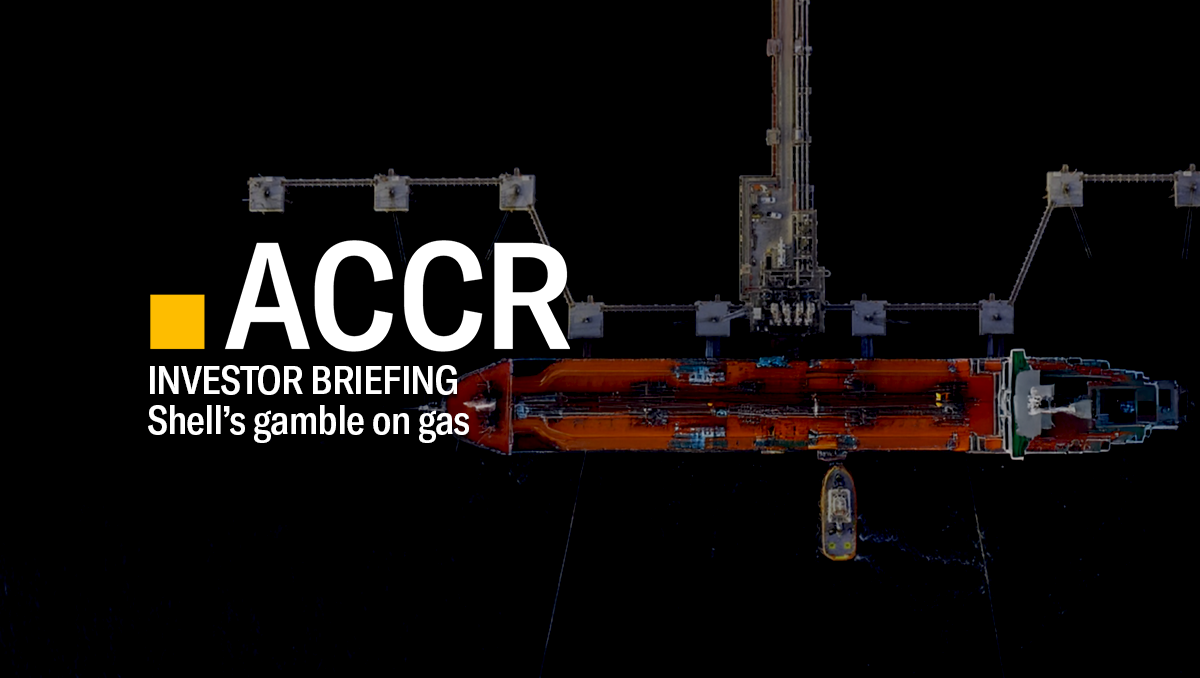Publication Investor Briefing: Shell’s gamble on gas
Executive summary
Shell plc is advancing its LNG growth strategy - betting on a future where liquefied natural gas (LNG) plays a major role in the energy mix, particularly in emerging markets.
However, with more than 1.4 billion tonnes of uncontracted LNG – more than any other independent oil and gas company – Shell is exposed to major risks should demand, and hence price, fail to meet its expectations. Additionally, it is not clear how Shell’s LNG growth ambitions reconcile with its climate commitments, including its target to reach net zero emissions by 2050.
The veracity of Shell’s LNG strategy and the bullish demand forecasts that underpin it have been questioned by previous research,[1] and are the subject of a shareholder resolution filed by institutional investors ahead of the 2025 AGM. The resolution asks Shell to disclose how its LNG production and sales targets, demand forecasts and new capex are consistent with its climate commitments.
Whether Shell’s bullish position on LNG demand is a sound basis for a responsible LNG strategy is under scrutiny - yet the company’s LNG Outlook 2025 does not sufficiently justify its LNG growth strategy or explain why it takes such an outlier position on demand. It is concerning that Shell’s LNG forecast has remained unresponsive to major shifts in the global energy market over recent years - changes which will likely reduce long-term demand.
Investors require confidence that Shell's strategy is resilient through the energy transition. However, the company has yet to deliver.
Key findings
- Shell has more uncontracted LNG than any other independent oil and gas company, exposing it to major risks in a lower price environment.
- If LNG was priced competitively with renewables in developing markets, the Net Present Value (NPV) of Shell’s LNG assets would be -$10 billion,[2] which is $90 billion less than their NPV under Rystad’s central price assumptions. The NPV of Shell’s LNG assets falls by $14 billion with each $1/MBtu reduction in LNG prices.
- Shell’s 2025 LNG demand outlook overshoots all IEA scenarios and is 21% higher than STEPS – a scenario which assumes that no further emissions reduction policies will be implemented between now and 2050.
- Shell’s outlook for LNG has remained unresponsive to dramatic changes in energy markets over recent years that will likely reduce LNG demand.
- On Shell’s Capital Markets Day, the company produced a graph showing the position of its under-construction LNG assets on a global cost curve in a way that overstates its cost competitiveness.
- Shell’s LNG Outlook 2025 provides nearly no insight into bulk LNG demand beyond 2025, except for assertions of LNG demand by sector and a list of “demand drivers”. Each of these drivers are contestable and the Outlook itself doesn’t provide sufficient information to substantiate its bullish forecast.
- Shell has not explained how its climate commitments are achievable given its LNG growth strategy.
Download a PDF of Investor Briefing: Shell’s gamble on gas | 07/04/25
Please read the terms and conditions attached to the use of this site.
ACCR, 2024, Shell’s LNG strategy: Overcooked? https://www.accr.org.au/downloads/121124_shelllngstrategy_overcooked.pdf ↩︎
All $ currencies are USD unless otherwise stated. ↩︎
